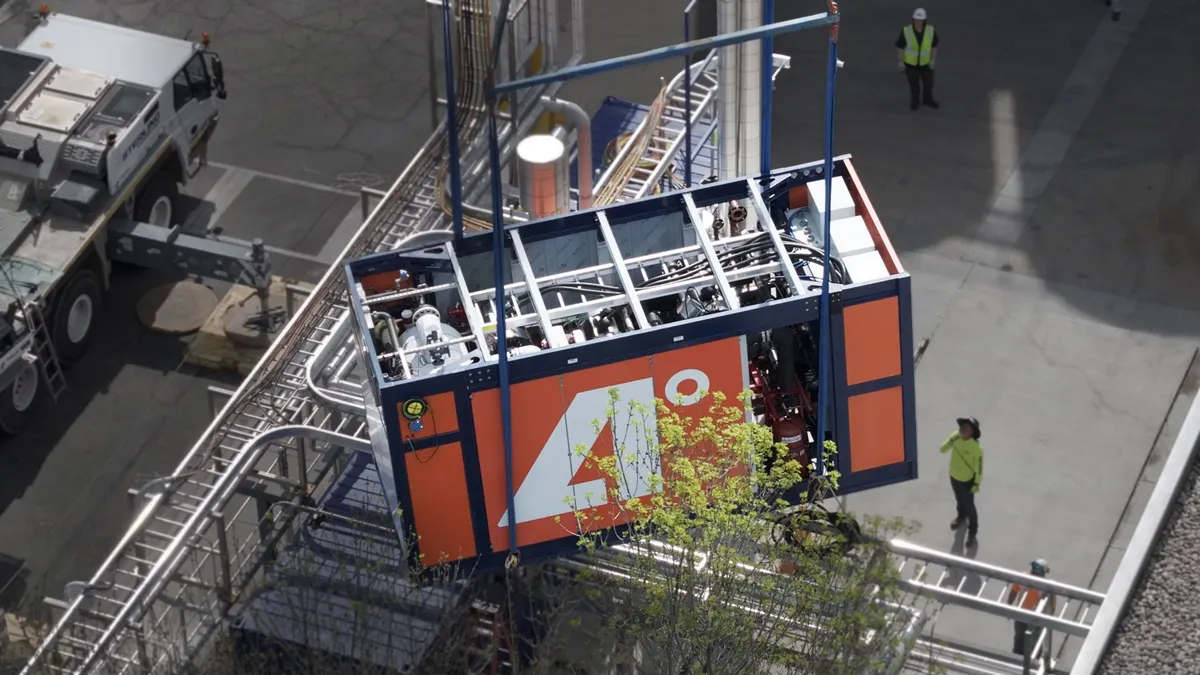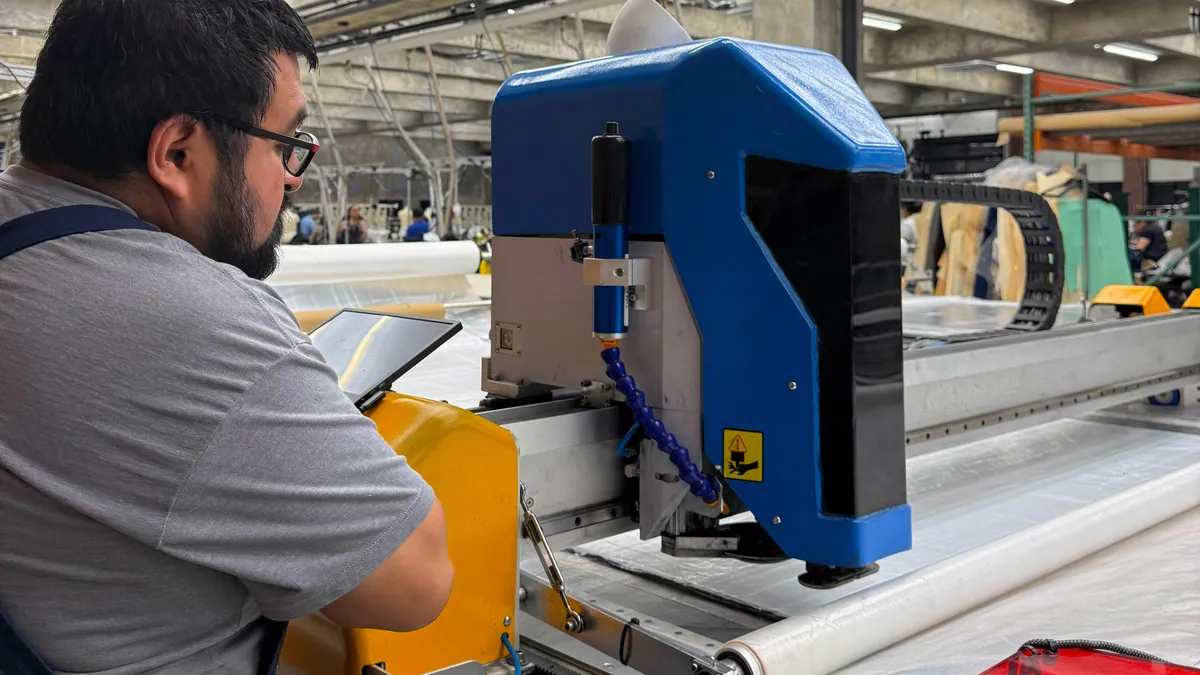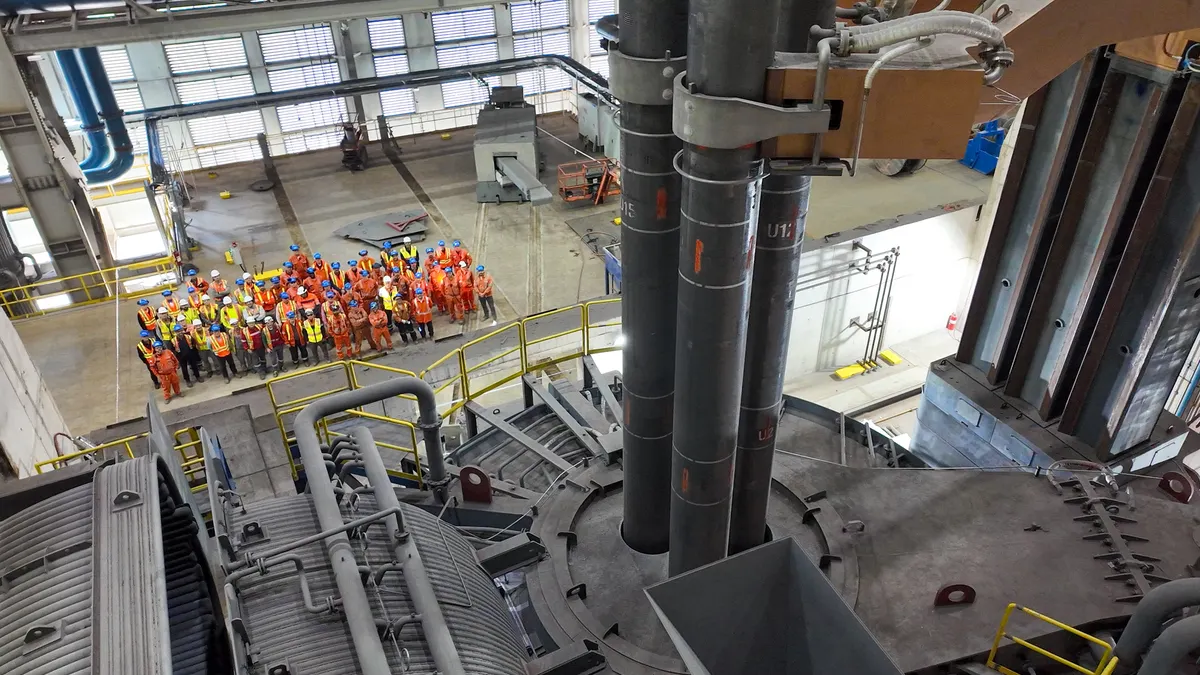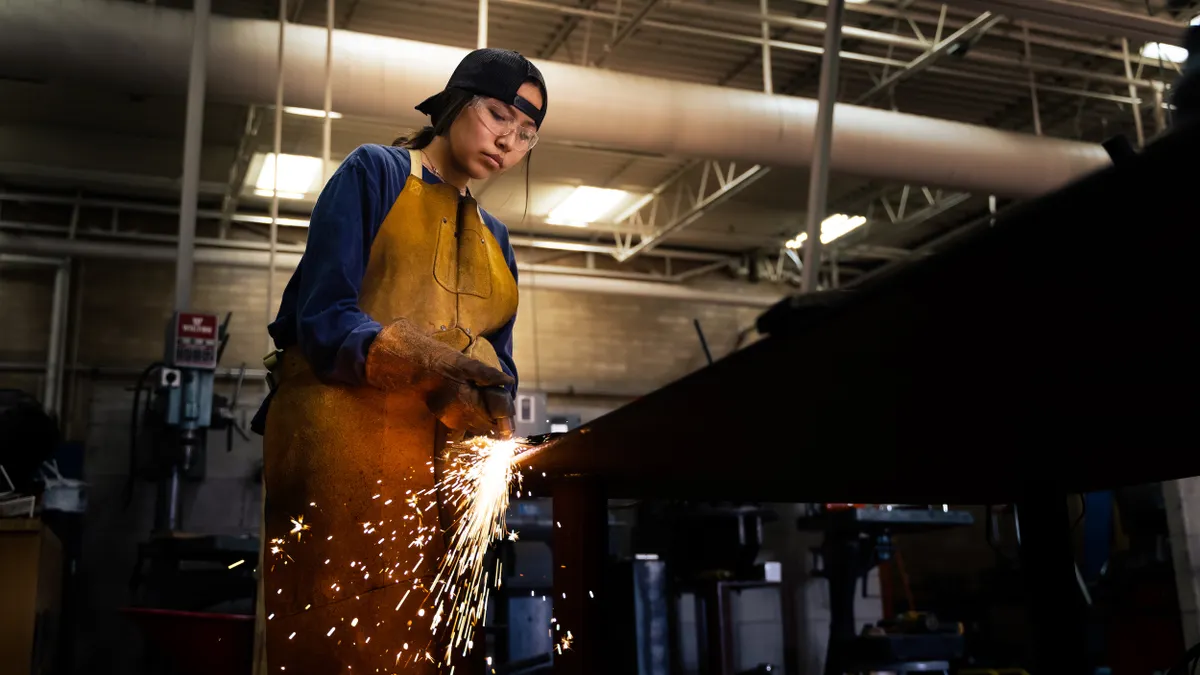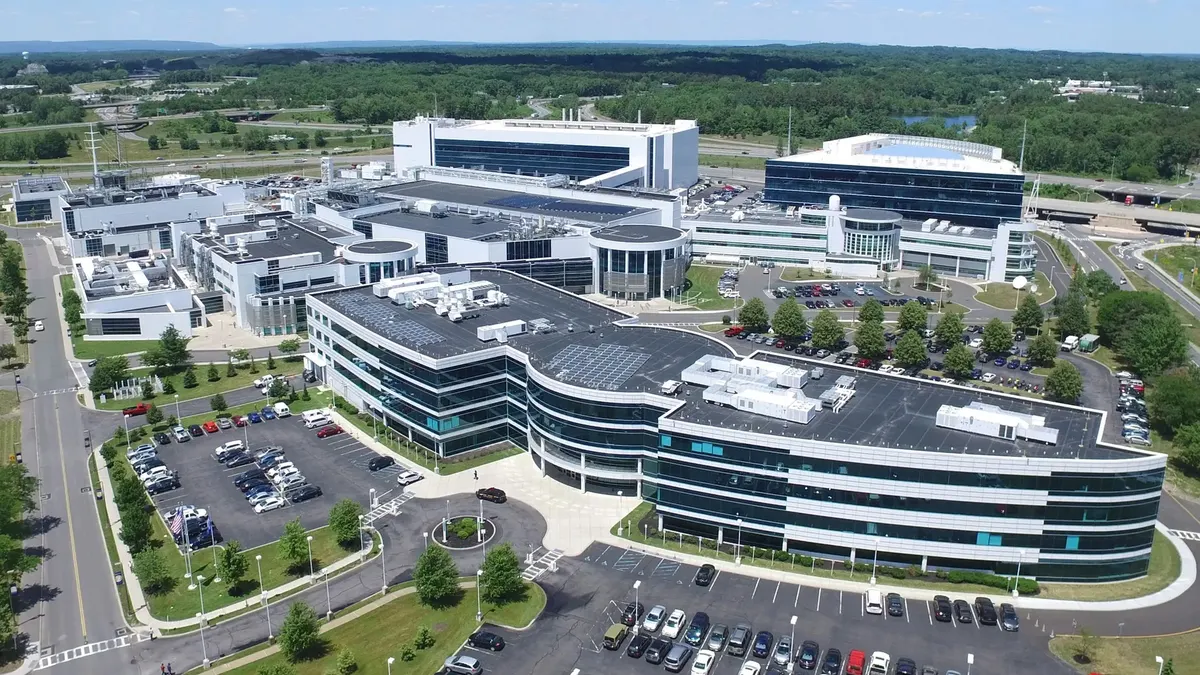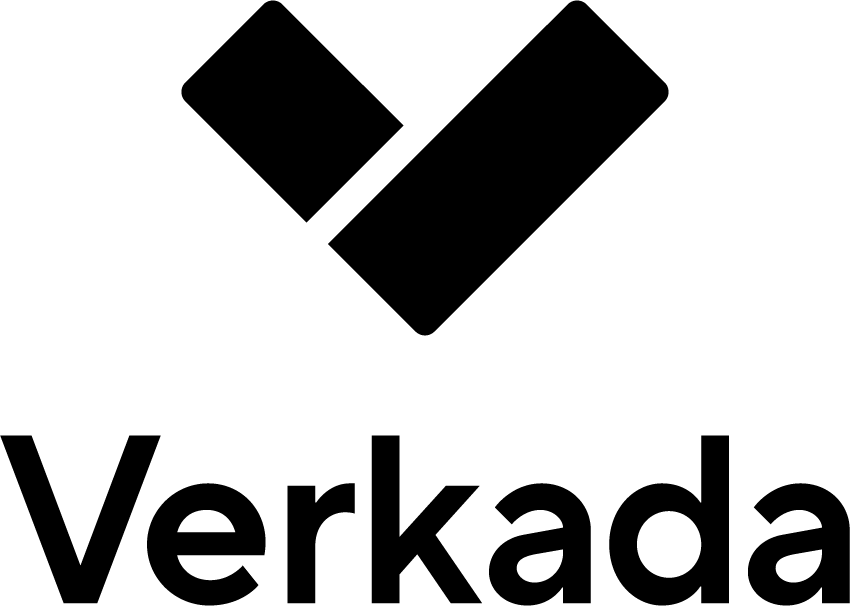A small but growing number of breweries are replacing or supplementing the use of gas boilers with heat pumps as one step toward their net-zero emissions goals.
Well-known breweries including Guinness and New Belgium Brewing are among those investing in these solutions. Cost, downtime and maintenance are common concerns for manufacturers seeking to replace equipment, but technology companies providing electrified heat and steam are building their businesses to address these pain points.
“Heat is three-quarters of industrial emissions,” said AtmosZero CEO Addison Stark. Half of that heat is delivered by steam, he added, and “there’s an outsize amount of steam used in food and beverage.”
Stark started the company with the goal of building a cost-competitive and drop-in electrified replacement for conventional boilers. The solution allows manufacturing facilities to produce the steam needed for processes such as cleaning and sterilizing equipment and packaging, without the use of gas-powered boilers.
Heat pumps work by moving heat from one place to another with high efficiency, which helps to compensate for the higher cost of electricity. AtmosZero’s Boiler 2.0 uses proprietary technology to extract heat from the air and convert it.
AtmosZero is focused on facilities that have steam loads of 1 to 5 megawatts of thermal capacity. Manufacturers that don’t want to tear out an entire boiler room can opt to just replace one boiler, or supplement their gas boilers. Stark said this ease of adoption is attractive to companies who are looking for simpler solutions.
“We are making steam electrification a product not a project,” he said.
New Belgium Brewing, based in Fort Collins, Colorado, is among those utilizing AtmosZero’s equipment. The company installed an industrial electric boiler in May that can generate up to 1 ton of steam per hour.
“There are currently not a lot of market solutions for clean energy in this sector, and we’re excited to participate in the development and demonstration of this novel technology,” said a New Belgium spokesperson via email. If successful, AtmosZero's heat pump design will use significantly less electricity than conventional electric boilers and account for 30% to 40% of the brewery’s steam needs.
Steam used in brewing operations make up 25% of the brewery’s scope 1 and 2 emissions. If powered by a clean power source — which the City of Fort Collins Utilities has committed to provide by 2030 — AtmosZero’s Boiler 2.0 has the potential to significantly reduce the facility’s greenhouse gas emissions.
“The prototype will be measured for performance and reliability to determine if it can meet 100% of the Fort Collins brewery’s steam demand,” the spokesperson said.
Breweries outside of the United States are also taking steps to decarbonize. Diageo is phasing out the use of fossil fuels at its St. James’s Gate Guinness facility in Dublin as part of a goal to reduce the site’s scope 1 and 2 emissions by more than 90%.
And in Manchester, U.K., Heineken is using a low-temperature hot water network driven by heat pumps to replace steam boilers as part of its own net-zero ambitions. The solution uses an “environmentally friendly” ammonia refrigerant with zero ozone depletion potential and zero global warming potential.
The relatively low to medium temperatures used by manufacturing facilities such as breweries and distilleries make them good candidates for heat pumps, according to sources. But a lack of understanding about what these solutions are and what they can do could prevent wider adoption.
“There’s still a significant knowledge gap,” said Andrew Hoffmeister, a senior research analyst in the industrial program at the American Council for an Energy-Efficient Economy.
Hoffmeister said it will take a lot of changes by manufacturers to make electrification ubiquitous, with cost coming up as a common factor.
“Capital costs are definitely a barrier,” Hoffmeister said. “Operational costs can also be pretty significant, especially in places where electricity is expensive.”
Grant programs and subsidies could help to make investment in heat pumps more attractive for companies, but Stark said there’s a lack of stability for funding at the federal level. He said AtmosZero typically counsels customers to look at opportunities on the state and local level.
Hoffmeister points to Pennsylvania’s Rise PA program as one such option. It’s a $396 million statewide industrial decarbonization grant program for industrial projects. Industrial facilities are the highest-emitting sector statewide and account for just over 30% of Pennsylvania’s total GHG emissions. Another example is California’s Indigo program, which provides incentives for industrial projects that will reduce emissions.
Such programs can help to offset initial investments, but they aren’t available everywhere.
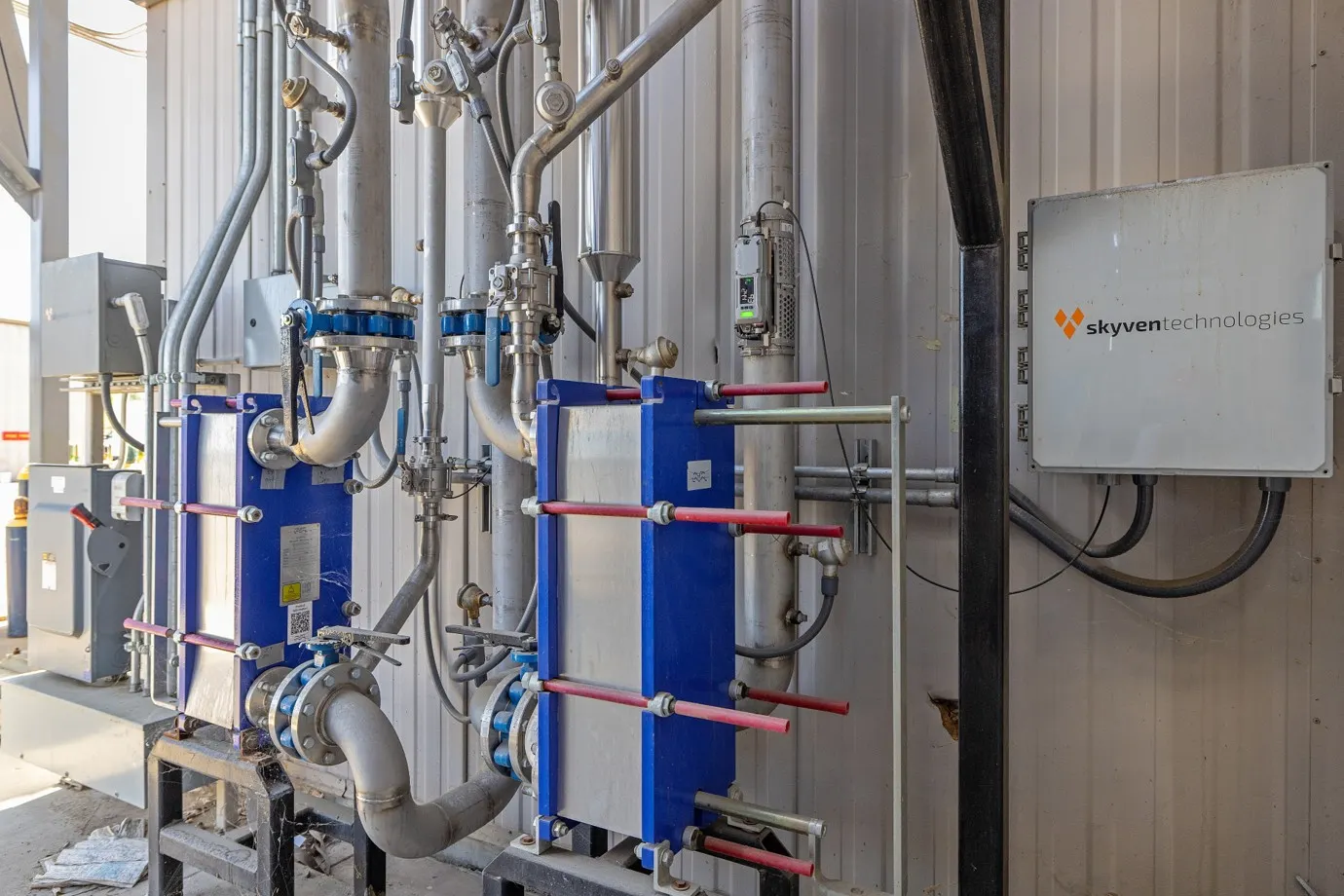
Skyven aims to solve the upfront cost barrier to adoption with its industrial steam-generating heat pump. This technology can take heat from equipment such as a malt kiln and turn it into usable steam at up to 420 degrees Fahrenheit. The company has seen initial traction in the food and beverage industry, along with the ethanol industry, and pulp and paper plants.
Skyven shoulders the costs for the equipment and engineering, building an engineering and financial plan for the customer and then charging a recurring service fee. The company recoups initial costs by sharing the savings with the customer based on the amount of measured and verified energy saved onsite. By installing the technology alongside traditional boilers, the company can use arbitrage to respond to the supply and demand market.
“Electric prices on the full scale electric market change every 5 or 15 minutes depending on the market,” Skyven CEO Arun Gupta said. “They can go sky high very quickly.”
Gupta said Skyven’s heat pump is more cost effective 80% to 90% of the time. When electric prices soar, the system is designed to kick natural gas boilers back on with no downtime. However, he noted, downtime is a risk with all energy sources due to severe weather events and other factors.
“Putting our system in parallel with the existing boiler… reduces risk of the new technology adoption,” he said, noting the company also shares some financial risk with customers. “That motivates us to make sure that the heat pump operates in a way that actually saves customers money.”


